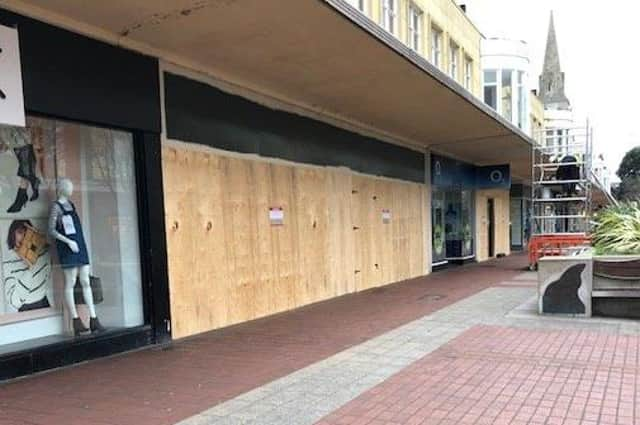What would bring you back to high street shopping? | Blaise Tapp


Not only does that mean there are 50 more opportunities for those with a circus to promote, but it also spells unemployment for many, regardless of how long they might be without work.
While we know there are jobs out there, perhaps the biggest concern caused by this worrying statistic from a data specialist is for how long these shops remain empty.
Advertisement
Hide AdAdvertisement
Hide AdI have previously lived in towns where it seems there are nearly as many ‘To Let’ signs as there are posters advertising special officers or dish of the day and it doesn’t make for a pleasant shopping expedition.
Venturing to the end of town where there is a cluster of these ghost shops can be an eerie experience and breaking that cycle can prove near-impossible to break.
For more than a decade, I used to regularly walk past a derelict cycle shop that closed when Ratners and Marathon bars – the first time around – were still a thing.
It was as much of a portal to another time than it was a place that once used to sell Raleigh Choppers and it had a negative impact on its local area.
Advertisement
Hide AdAdvertisement
Hide AdWhile the closure of businesses is nothing new, the genuine worry is whether, post-lockdowns, prospective small business owners feel confident enough that they’ll get the footfall, as well as the wider support they need to take a punt on investing in a physical shop, when doing business virtually, is usually far less overhead heavy.
I regard anybody brave enough to open up a business on the high street as a genuine community champion because, unless you are peddling bowls of soup or two penny chews, it is not something that you really need to do to earn money from retail in the 21st century.
Over the years, I’ve spoken to scores of wide-eyed entrepreneurs who have taken the high street plunge and in the majority of cases they’ve done so because they believe in that particular town or city. Sometimes, this belief is built upon a genuine love for the location in question.
These are the kind of businesses that a shopper like me can believe in as the passion translates onto the shop floor and shelves – if somebody genuinely believes in both the venture and the market they are pitching at then it follows that, more often than not, the offering is worth investing your hard-earned in.
Advertisement
Hide AdAdvertisement
Hide AdAs much as we want these businesses to be successful, it doesn’t always work out that way and their failure isn’t always the fault of the business owner.
Enthusiasm alone doesn’t necessarily translate into success and much more can be done to support the small businesses that are vital if any community is to thrive.
For as long as I’ve been paying tax, there has been a real need for a genuine strategy for our high streets, which ought to be the beating heart of where we live rather than the afterthought that many of them currently are.
Although the government launched a strategy of sorts back in July, the vision appears to be a repackaging of existing policies along with an extra 10m quid to scrape discarded chewing gum from the nation’s pavements.
Advertisement
Hide AdAdvertisement
Hide AdI might be wrong of course and it could be that the blink-and-you’ll-miss-it announcement actually will prove to be the beginning of a revolution that puts the swagger back into our town and city centres.
People like me don’t visit as much as we used to because we can either buy what we need online or don’t fancy debating whether to sell a kidney in order to pay for four hours parking in a multi-storey.
Millions of shoppers need a compelling reason to stop lining the pockets of rocket-loving billionaires and spend their cash with businesses that genuinely care about where we live.
Comment Guidelines
National World encourages reader discussion on our stories. User feedback, insights and back-and-forth exchanges add a rich layer of context to reporting. Please review our Community Guidelines before commenting.